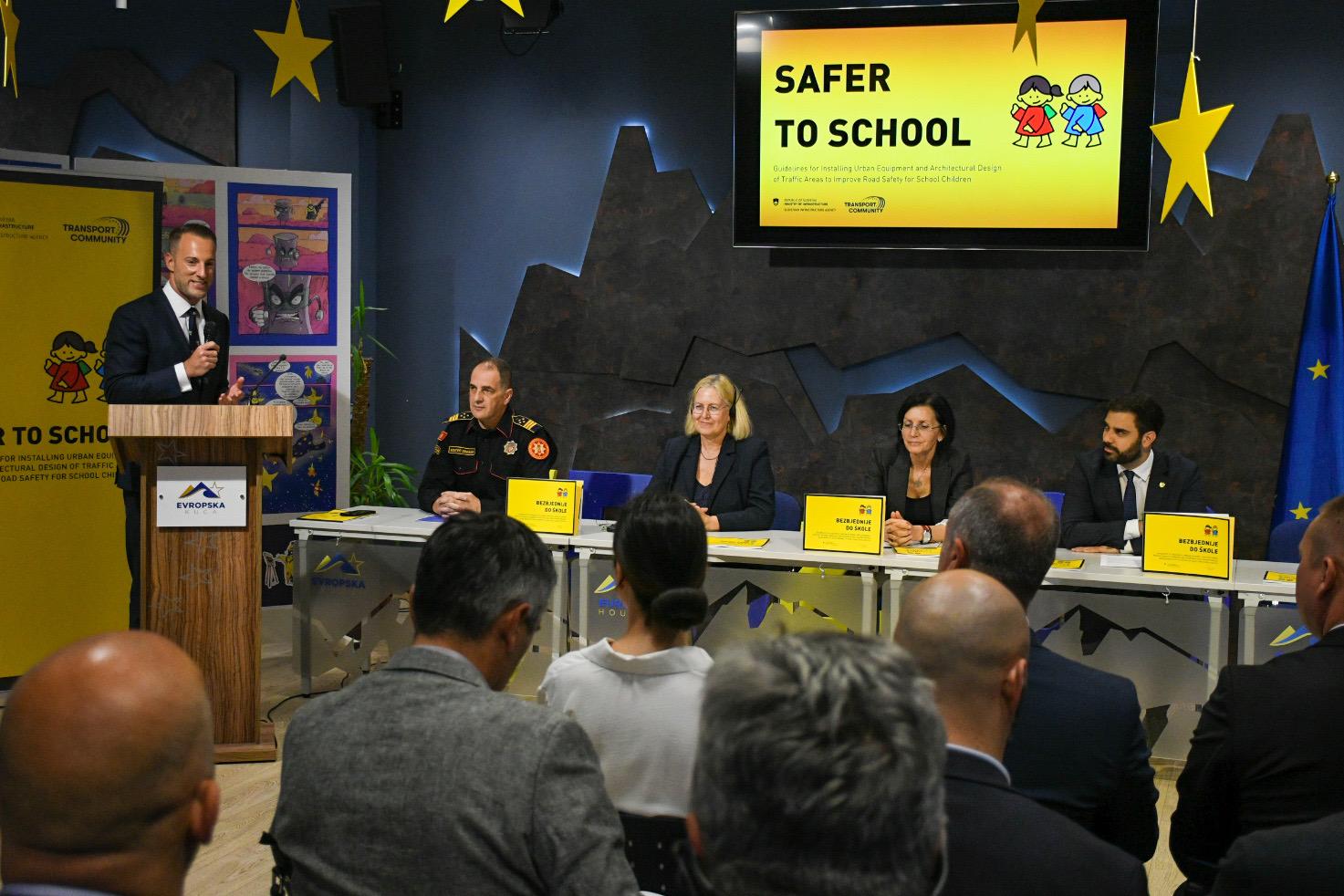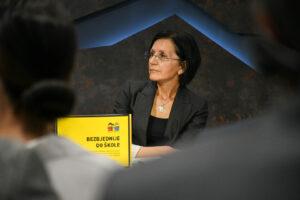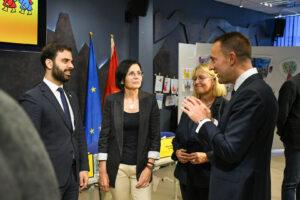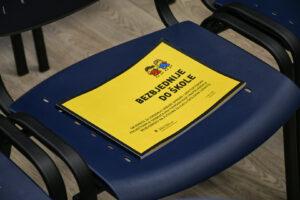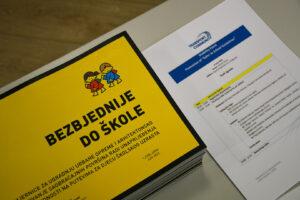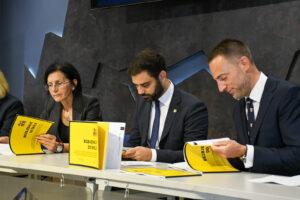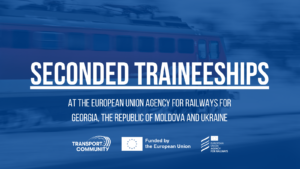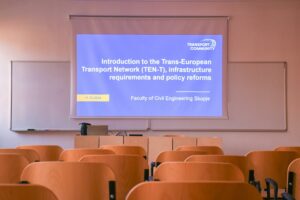PODGORICA – The Transport Community Permanent Secretariat, in partnership with Slovenian authorities, promoted and highlighted the importance of implementing Safer to School guidelines. At the promotional event organised in Podgorica this Tuesday, the representatives of the Government of Montenegro, Slovenian authorities, and the Transport Community, singled out the importance of enhancing road safety around educational institutions.
Safer to School guidelines offer ready-to-implement measures aimed at increasing road safety for children around schools. Originating from the Slovenian Infrastructure Agency and currently being successfully implemented in Slovenia, these guidelines serve as an inspiration for enhancing road safety in the Western Balkans.
Transport Community Permanent Secretariat Director, Mr Matej Zakonjšek, underlined the join efforts in implementing comprehensive measures and guidelines to enhance the safety of our school zones as an important factor in reducing casualties.
“Ensuring and enhancing road safety around educational institutions is key for children’s protection and well-being, as one of the most vulnerable road user groups. Implementing speed limits, clear signage, and supervised crossings can significantly reduce the risk of accidents, as the experience of Slovenia shows. Our joint involvement in this endeavour is essential for fostering enhanced road safety around schools,” he told the event’s participants.
“I see that the authorities of the Capital City of Podgorica are trying to raise the level of traffic culture in the city. Implementation of the “Safer to School” guidelines will definitely help to improve traffic safety, especially for children,” Ambassador of Slovenia to Montenegro, H.E. Ms Bernarda Gradišnik, underlined.
“Negative global statistics regarding traffic accidents are also present in Montenegro. On our roads, an average of 18 traffic accidents occur daily, in which nine people sustain serious or minor injuries. It is a disheartening fact that from 1999 to 2023, 1,996 people have died in traffic accidents in Montenegro, while over 56,000 have been seriously or slightly injured. To provide a clearer picture, the number of fatalities in traffic accidents in Montenegro over the past 25 years is equivalent to the population of Plužine. The fact that in 2023 alone, 78 people died in traffic accidents in Montenegro, which translates to 125 people per million inhabitants, placing Montenegro at the bottom of the list of European countries, is alarming and disheartening for the entire society,” Minister of Transport and Maritime Affairs of Montenegro, Mr Filip Radulović, pointed out.
The Western Balkans, with an average of 73 fatalities in road crashes per million inhabitants in 2023, starkly contrasts the EU average of 46 fatalities per million inhabitants. This statistic underscores the urgent need for concerted efforts to bridge this gap and save lives on the region’s roads.
Across the region, the number of fatalities and seriously injured children in road traffic crashes is worrisome, showing the risks faced by the youngest and most vulnerable road users.
These numbers underscore the pressing need for action to prevent further tragedies and ensure the safety of our children on the roads, including on their journey to and from school.
The Transport Community, in collaboration with Slovenian authorities, stands ready to support Western Balkan authorities in implementing the Safer to School guidelines. By adapting best practices from the EU to local needs, we aim to significantly improve traffic safety around educational institutions, thereby safeguarding the lives of children in school zones.
The Transport Community is also committed to partnering with various authorities and civil society to enhance transport across the Western Balkans. By implementing EU standards and best practices, we strive to create safer roads and a brighter future for all.
The Podgorica event gathered representatives of the Montenegrin Ministry of Transport and Maritime Affairs, Ministry of Interior, Capital City of Podgorica, European Union Delegation to Montenegro, Slovenian Embassy, Slovenian Infrastructure Agency, Transport Community, and other stakeholders.
BACKGROUND
The Transport Community is an international organisation in the field of mobility and transport. It has 36 participants – the European Union member states represented by the European Commission, the Western Balkans six, and the three observing participants (Georgia, Republic of Moldova and Ukraine). We are working on integrating Western Balkans’ transport markets into the EU by assisting the six Western Balkans partners in adopting and implementing the EU legislation in the transport field and supporting projects connecting Western Balkans regional partners among themselves and with the EU.
Focusing on improving transport across the region, the Transport Community also focuses on the road safety. With its Action Plan for Road Safety, the Transport Community aims to create a safer road environment that protects all road users and significantly reduces the number of road traffic injuries and fatalities across the region. Access the Action Plan here.
Furthermore, with its Western Balkans Road Safety Observatory (WBRSO), Transport Community has set in place a platform aiming to offer a tailored solution, monitor road safety targets, and contribute to improvement and harmonised road safety data in the region. Access the WBRSO here.

